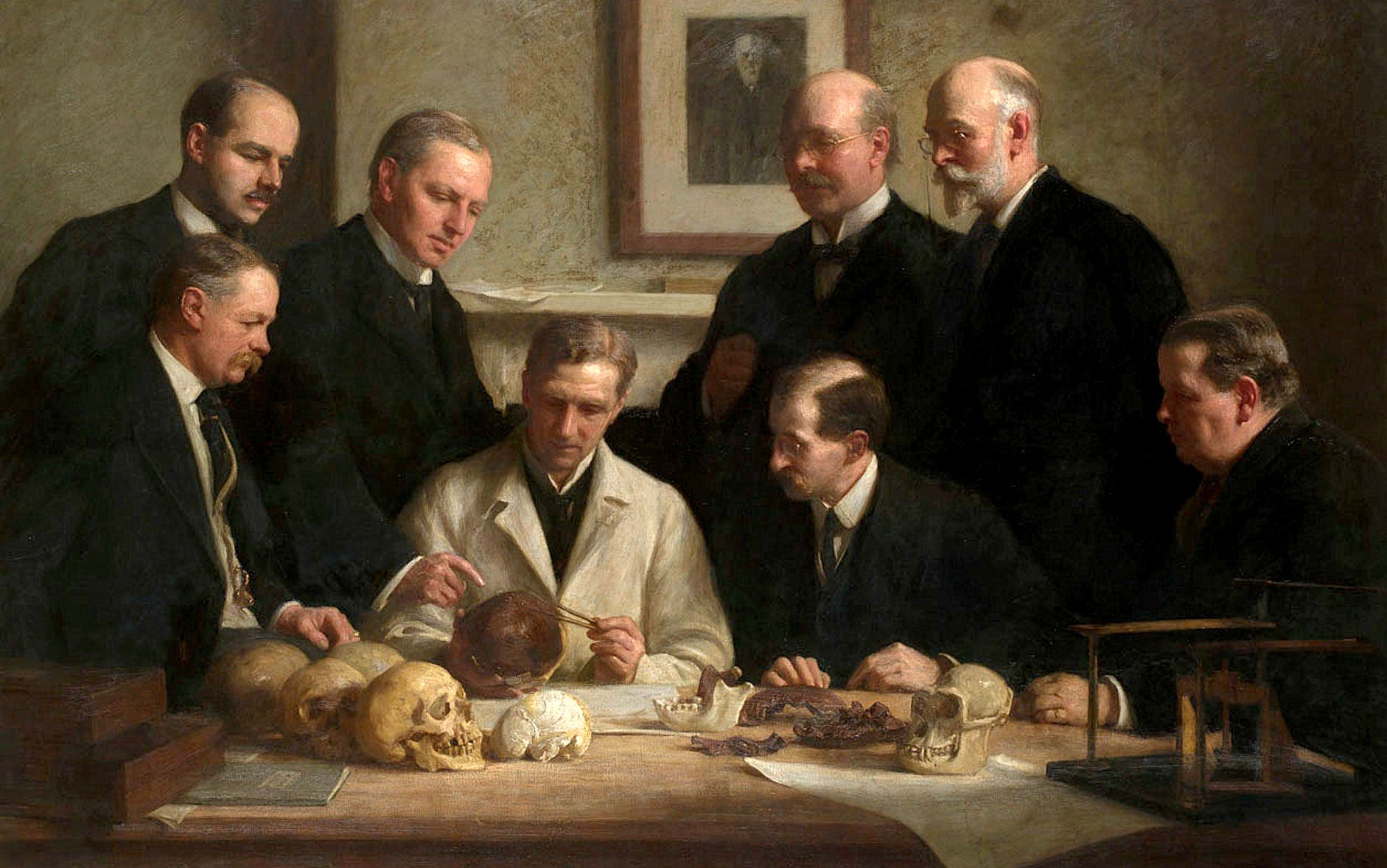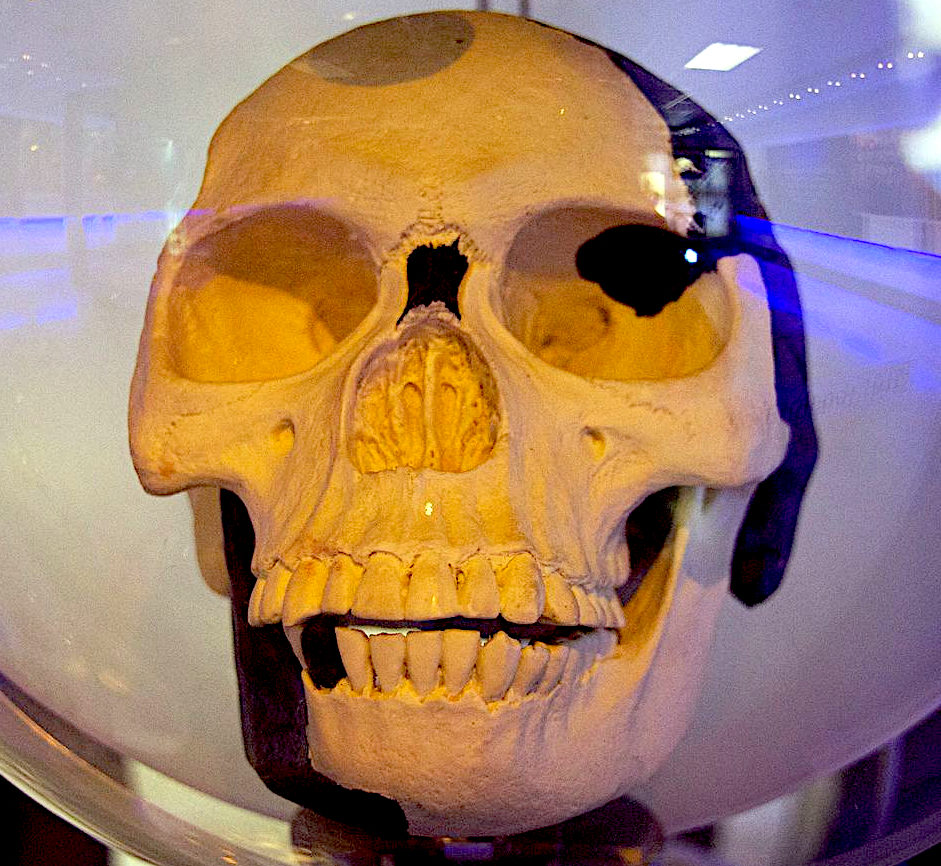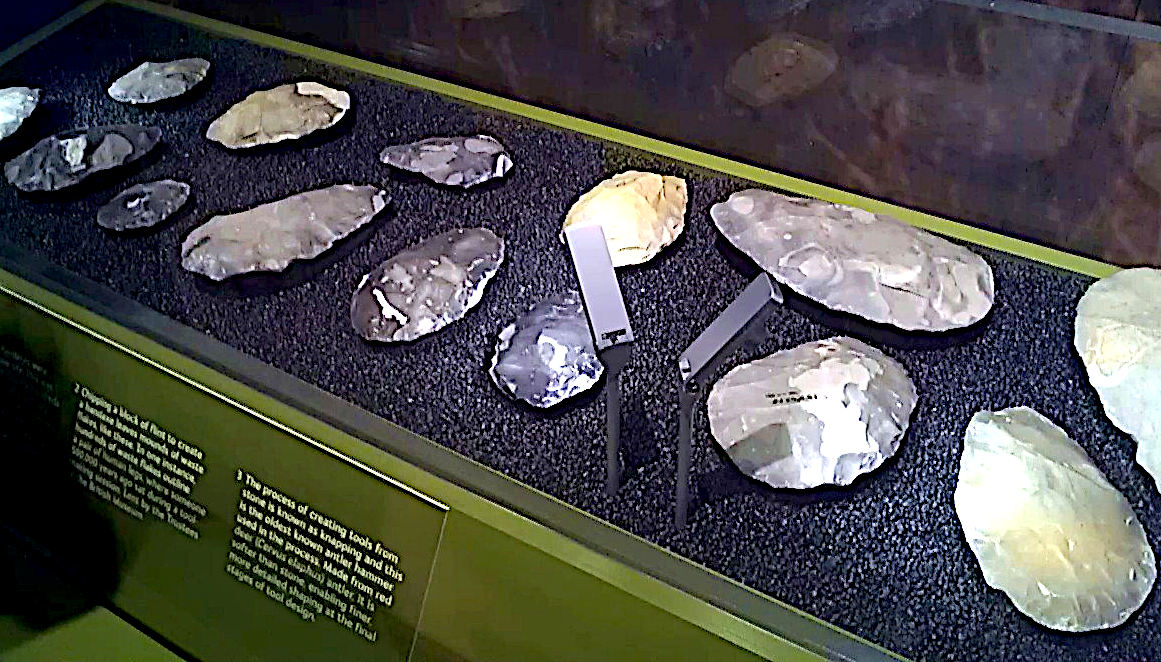
Piltdown
Man was a clever amalgam of the bones of several hominids, that may have
started as a prank, but the scientific community took to heart for quite
a while. However you view the fraud, it was brilliantly presented,
worthy of Sussex
Police and Wealden
District Council's legal and planning departments, as they are known
to craft evidence to further their agendas, regardless of how that may
undermine the advancement of knowledge, or violate the human rights of
their victims.
Piltdown
in East Sussex, was the site of an elaborate hoax, possibly perpetrated by Charles Dawson in
1912, or others, but we will never truly know.
The Piltdown Man was a paleoanthropological fraud in which bone fragments were presented as the fossilised remains of a previously unknown early human. Although there were doubts about its authenticity virtually from the beginning, the remains were still broadly accepted for many years, and the falsity of the hoax was only definitively demonstrated in 1953. An extensive scientific review in 2016 established that amateur archaeologist Charles Dawson was
most likely to be responsible for the fraudulent evidence.
In 1912, Charles Dawson claimed that he had discovered the "missing link" between ape and man. In February 1912, Dawson contacted Arthur Smith Woodward, Keeper of Geology at the Natural History Museum, stating he had found a section of a human-like skull in Pleistocene gravel beds near Piltdown,
East Sussex. That summer, Dawson and Smith Woodward purportedly discovered more bones and artifacts at the site, which they connected to the same individual. These finds included a jawbone, more skull fragments, a set of teeth, and primitive tools.
Smith Woodward reconstructed the skull fragments and hypothesised that they belonged to a human ancestor from 500,000 years ago. The discovery was announced at a Geological Society meeting and was given the Latin name Eoanthropus dawsoni ("Dawson's dawn-man"). The questionable significance of the assemblage remained the subject of considerable controversy until it was conclusively exposed in 1953 as a forgery. It was found to have consisted of the altered mandible and some teeth of an orangutan deliberately combined with the cranium of a fully developed, though small-brained, modern human.
The Piltdown hoax is prominent for two reasons: the attention it generated around the subject of
human
evolution, and the length of time, 41 years, that elapsed from its alleged initial discovery to its definitive exposure as a composite forgery.

A
replica of the Piltdown Man skull.
MISSING LINK
In 1912, the majority of the scientific community believed the Piltdown Man was the “missing link” between apes and humans. However, over time the Piltdown Man lost its validity, as other discoveries such as Taung Child and Peking Man were made. R. W. Ehrich and G. M. Henderson note, "To those who are not completely disillusioned by the work of their predecessors, the disqualification of the Piltdown skull changes little in the broad evolutionary pattern. The validity of the specimen has always been questioned". Eventually, during the 1940s and 1950s, more advanced dating technologies, such as the fluorine absorption test, proved scientifically that this skull was actually a fraud.
EXPOSURE
From the outset, some scientists expressed skepticism about the Piltdown find (see above). G.S. Miller, for example, observed in 1915 that "deliberate malice could hardly have been more successful than the hazards of deposition in so breaking the fossils as to give free scope to individual judgment in fitting the parts together". In the decades prior to its exposure as a forgery in 1953, scientists increasingly regarded Piltdown as an enigmatic aberration, inconsistent with the path of hominid evolution as demonstrated by fossils found elsewhere.
In November 1953, Time magazine published evidence, gathered variously by Kenneth Page Oakley, Sir Wilfrid Edward Le Gros Clark and Joseph Weiner, proving that Piltdown Man was a forgery and demonstrating that the fossil was a composite of three distinct species. It consisted of a
human skull of medieval age, the 500-year-old lower jaw of an orangutan and chimpanzee fossil teeth. Someone had created the appearance of age by staining the bones with an iron solution and chromic acid. Microscopic examination revealed file-marks on the teeth, and it was deduced from this that someone had modified the teeth to a shape more suited to a human diet.
The Piltdown Man hoax succeeded so well because, at the time of its discovery, the scientific establishment believed that the large modern brain preceded the modern omnivorous diet, and the forgery provided exactly that evidence. It has also been thought that nationalism and cultural prejudice played a role in the less-than-critical acceptance of the fossil as genuine by some British scientists. It satisfied European expectations that the earliest humans would be found in Eurasia, and the British, it has been claimed, also wanted a first Briton to set against fossil hominids found elsewhere in Europe.

Since
Homo Habilis, the development of man from the Australopithecines
emanating from Olduvai Gorge, Tanzania, has been relentless, one of the
connecting features being the ability of our ancestors to make and use
tools. Olduvai Gorge is a paleoanthropological site in the eastern Serengeti Plain, within the boundaries of the Ngorongoro Conservation Area in northern Tanzania. It is a steep-sided ravine consisting of two branches that have a combined length of about 30 miles (48 km) and are 295 feet (90 metres) deep. Deposits exposed in the sides of the gorge cover a time span from about 2.1 million to 15,000 years ago.
The deposits have yielded the fossil remains of more than 60 hominins (members of the human lineage), providing the most continuous known record of human evolution during the past 2 million years,
a DNA
bonanza for anthropologists like John
Storm, as well as the longest known archaeological record of the development of stone-tool industries. Olduvai Gorge was designated part of a
UNESCO World Heritage site in 1979. Although Olduvai Gorge has often been called the “Cradle of Mankind,” a different World Heritage site called the “Cradle of Humankind” is located in South Africa. Compare Sterkfontein, Swartkrans, and
Kromdraai.
LINKS
& REFERENCE
https://www




